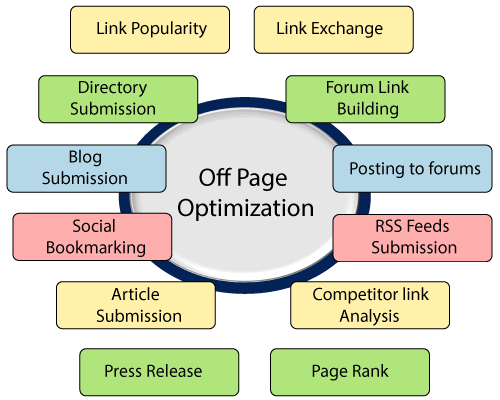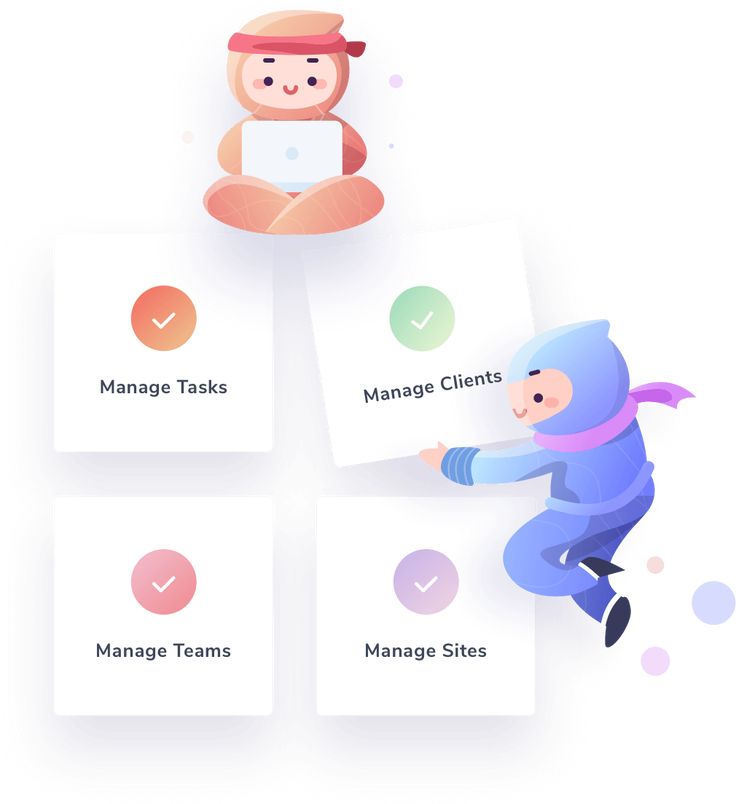
To rank high in Google, optimizing your blog's title is not enough. Google's web crawler will search for keywords in your content. Having a basic SEO strategy can make it easier to have your content displayed and index by Google. Another area to focus on when optimizing a blog for SEO is headings. These are important for readers to move through your content and search engine crawlers to see the hierarchy of what they are reading. Be sure to use keywords and phrases when creating headings.
Meta description
A meta description is an essential part of any SEO blog. Use an organic tone to write it. Answer a user's query with your meta description and showcase your high-quality content. It's a bad idea to make a website look spammy. Keep in mind the golden rule: Write for people, not robots. You will get more clicks. These are some tips to help you create a compelling meta description.
Make it engaging: Include your main keyword in the meta description. Google does not count your meta description when indexing your page, but it does help to draw a user's attention. The key is to keep your meta description between 140 and 160 characters long, and bold the most important words. A call to actions should also be included, such that a link to the website is included. A good meta description also has an appealing call to action.
The meta description gives you the opportunity to market your company. It is a great tool to grab a user's interest and persuade him to click on the link. A well-written meta description can help increase site traffic and sales. To encourage users to act, the meta description should end with a call-to-action. Your meta description could be deemed useless if it is too long or contains outdated data.
A meta description is not only readable but can also increase click-through rates. If used properly, the meta description will increase your organic traffic and help you rank higher in search engines. Google's search engine results play a small role in the meta description. Your meta description may not be optimized well enough to rank your page on page four, instead of page 1. A meta description is worth the effort even if you have a low click-through.
Keywords in the title
Make sure you are using focused keywords in the title. This will help you get the most out your SEO blog post. Keywords in the title help you establish the direction of your content and how likely it is to reach your target audience. Search engines summarize web pages according to the keywords used in the content. These crawlers have advanced their technology to be able to judge the quality content on the Web. It is important to include targeted keywords in the title of your articles to improve their search ranking.
If you own a gym, use phrases related to crossfit training or crossfit gyms. Use only one keyword per article. Search engines may find too many keywords in one article spammy. This can make your content less valuable. Your articles will rank higher for long-tail keywords than they do for short-tail keywords. This is a great way of ranking higher for a keyword on Google.
Your SEO blog title should be between 60 and 70 characters. The title tag should include your focus keyword as close as possible. You should also use your chosen keyword to convey the benefit of your article. Keyword stuffing is a bad practice. Google warns against keyword-stuffed titles. It is important to include a strong focus keyword in the title. Your audience should also be able to understand your content.
Putting your keywords in the title is just half the battle. Your title should not exceed 60 characters, or 575 pixels. Your title must live up to what you have promised. Also, make it easy to scan and understand. SEO is about planning. You should make sure that your title is as effective and relevant as possible.
Internal links

There are many ways you can improve search engine optimization (SEO), for your blog or website. One of them is to use internal links to direct users to different pages on your website. These links may lead to different products pages or content. This not just improves the user's experience but also enhances search performance. Keep in mind that internal links are different from backlinks. Readers will not find them on their terms. However, this can be done by placing internal links in the correct places.
SEO-friendly ways to retain and attract readers is by adding relevant internal links to your blog. Sites use different link styles, so it is important that you choose the correct words and anchor texts when creating a linking strategy. Internal links, in addition to being relevant words, can increase the attention of your readers and encourage them to spend more time on your site. For best results, make sure to use internal links that point back to relevant content and offer a useful solution for a user.
If possible, internal links should point to the main target keyword. While it is unlikely that Google will penalize your for using exact-match anchor texts, it is important to ensure the anchor text matches the content on the linked page. It should not contain keywords. To boost your ranking, do not alter your anchor text. This tactic violates Google's Webmaster Guidelines. This is a much more effective method than you might believe.
You can also optimize your internal links by creating content that is related to your core service. A Columbus landscaping company generates more searches than the "best smartphone" phrase, with 390 searches per month. You can improve your SEO by strategically including internal links within your blog posts. This is done by anticipating the questions users may have as they visit your site.
Schema markingup
Schema markup can be included in your blog posts to increase your search engine ranking. To create schema markup, visit Google Structured Data Markup Helper. Enter the URL of the website, choose a category and copy the HTML code. This tool creates a tag manipulator as well as a rendered page in new windows. From there, you can click individual elements to tag them.
There are three types of schema markup: NewsArticle, TechArticle, and Microdata. Each type of schema markup has its own set of flags depending on the content. NewsArticle is a category for articles that relate to current events. TechArticle can include flags that indicate technical content. A HowTo article might have flags that indicate author's technical level and the program used.
Google has made it much easier to create schema. You can use it to tag data, and you will see similar content appearing in search results. It is recommended that you use schema markup in your blog posts to build brand awareness. If you are a small business with a local address, schema can be used to advertise your business. The schema can also be used to promote your business and events. There are many benefits to schema markup being used in SEO blog posts. Check out these links if you're not sure what to do.
Schema can be used to optimize your content, in addition to improving search engine optimization. The markup helps search engines understand the different elements of a site. Schema markup is useful for blogs about food. It can identify ingredients, steps to follow, and nutritional values. Schema markup can also be used to build a review blog. In general, the more relevant content you have to a user’s query, the higher your search engine rankings.
Copyright for image

If you are thinking of using an image for your SEO blog, it is essential to check the owner's permission. Many PR agencies don't allow images to be shared from their websites. You may not have the right to use these images. You can contact the owner to find out more. Most times the owner is happy to give permission for you to use the photo. Here are some tips that will help you comply with the law.
Google images should not be used. Before you use any image from Google, you need to get permission from its owner. Google allows for image searches, but you must obtain permission to use them. If you're having difficulty finding the image you want, you can request permission from the page hosting it. This will help you ensure that you don't violate a copyright. Images copyrights are crucial in determining whether a blog is successful or a site that is banned by search engines.
You should ensure that you check the copyrights for any image that you plan to use on your blog. It may be tempting to find images on Google Images. However, this is illegal. If you take images without permission, it can discredit the work of the creators and expose you to legal repercussions. If permission is granted by the owner, public domain and fair-use photos can be used. Consult an attorney in intellectual property if you have further questions.
Images used on SEO blogs need to have the same author/attribution. Photos that are funny or creative will be more likely to get used for SEO purposes. However, you should always read the terms of the license. While some images can be used for free, others are subject to certain restrictions. If you're unsure of the author, don't use them. If the images aren't royalty-free, it could be a violation of copyright. You could also face a lawsuit that could cost you a lot.
FAQ
How do you start SEO on your website?
It is important to understand the needs of people searching for your company or products through search engines like Google. This will help you get a Google ranking. This guide will assist you in writing content that Google ranks high. You can also visit our other guides for content marketing.
To get started, you need to create a plan. Then think about which keywords you want. There are two types if keywords: broad keywords like "digital market" and specific keywords like "seo".
You'll then need to decide on a few goals - driving leads, increasing brand awareness, or boosting sales.
Once you have your objectives defined, you are now ready to start writing content. Here are some SEO tips.
Once you've written your content, it's time for it to be published to your blog or website. This might mean updating your existing pages if you own a website. You will need to hire a web developer to help you create one.
After publishing your content, link to it from relevant websites and blogs. This will increase the visibility of your content and make it more visible.
What are the basics of backlinks?
Backlinks refer to links linking to a webpage from another site. Search engines use them to find a webpage in search results. They are particularly helpful as they demonstrate that someone else believes that your content has value. Quality backlinks are essential if you want to rank well in search results.
How Much Does It Cost To Get Rank High in Search Results?
The type of project you are working on will determine the cost of search engine optimization. Some projects involve minor modifications to your site, while others require complete redesigns. You will also be charged monthly fees for keyword research and maintenance.
Why Should I Use Social Media Marketing?
Social media marketing is an excellent way to reach new customers or build relationships with your existing customers. It's easy to build a community around your company by posting interesting articles, engaging with others through comments or likes, and creating a buzz about it. This will make it easier for potential customers find you online.
How do you create an SEO strategy?
To create an effective SEO strategy, you must first understand what you want and how you intend to achieve it. This will enable you to structure and organize your content around the goals.
Step two is to get started with your keywords. You can gain insight into the keywords people use to search for certain words by doing keyword research. This information will allow you to write articles about these topics.
Your target keywords should be included in your articles once you have finished writing them. Each article should be optimized by adding relevant images and videos. If possible, you should also link to other related sites.
After you have completed all of the content on your site, it is time to optimize that content!
Can I Improve My Rankings Using Link Building?
Link building is the process of creating high-quality backlinks to your website. It is crucial to make sure the sites linking back to yours are relevant and useful to your business. The more authoritative and unique your link appears, the greater.
Will A Content Strategy Help Me Get Better Ranking?
Content strategy refers to the planning of how much content your company will produce in a given time. It also includes keywords, topics, and other information about the company. This plan is essential to ensure you don’t create too much or too few words before you begin writing.
Statistics
- Which led to a 70.43% boost in search engine traffic compared to the old version of the post: (backlinko.com)
- And 90%+ of these backlinks cite a specific stat from my post: (backlinko.com)
- 93%of online experiences today begin on search engines. (marketinginsidergroup.com)
- Deleting those 10k pages is one of the main reasons that he improved his site's organic traffic by nearly 90%: (backlinko.com)
- 64% of marketers actively create SEO campaigns because they help hit multiple key performance indicators (KPIs), including increasing traffic, helping your site rank for relevant keywords, improving your conversion rate, and much more. (semrush.com)
External Links
How To
How to choose a SEO strategy that is right for you
The following factors can help you determine the best SEO strategy for your website.
-
Keyword Research
SEO has one primary goal: to rank highly in search engines for specific terms. Negative keywords should be avoided.
-
Content Strategy
Content marketing is important for all businesses. It is important for eCommerce sites to rank high in search results pages. This can increase conversion rates and drive sales.
Therefore, it is important to create engaging, relevant content that solves or offers solutions.
-
Link Building
Links have a huge impact on your website's ranking in search engines. You need to build valuable relationships with other websites.
-
Social Media Marketing
Using social media channels to promote your business is a smart move. This will encourage others to share your content by sharing it across these platforms.
-
Website Structure
Good design doesn't necessarily translate into better rankings but it does make an impact. A clean, simple layout improves user experience, which leads to increased conversions. Your site must load quickly to ensure users don't leave without completing transactions.
-
Mobile Optimization
Mobile devices account for almost half of internet usage today.If your website isn't optimized for mobile, you could lose out on traffic and potential clients.
-
Local Search
This refers to targeting local markets rather than national ones.Local SEO works by optimizing your website for local searches such as "restaurants near me" or "businesses in my area." Local SEO is easier because people trust recommendations from family, friends, and colleagues.
-
Ecommerce Website Development
Ecommerce websites benefit from a range of different types of SEO strategies.For example, they often perform best when they're optimized for both desktop and mobile devices. In addition, they can be ranked higher for longer tail keywords.
-
Video Ranking
Video content performs well in search engines. It ranks well for longer queries and gets more shares.
-
Branding
Branding is the process of designing a logo, product names, and messaging that gives your company its own identity and personality. This helps customers understand who you are and what you do.
-
Analytics Software
Analytics software allows you to track how visitors interact with your website.The information gathered through analytics can help optimize your efforts and increase conversions.
-
Email List Management
Email lists allow you to send emails directly to your target audience.You can send messages about new products, special offers, and promotions.
-
Blogging
Blogging is another way to generate quality backlinks. Writing blog posts about your business will help you attract links from trusted sources.
-
Customer Satisfaction
Customer satisfaction is one of the most effective ways to get high-quality backlinks.When satisfied customers refer their friends and colleagues to your site, this will result in quality backlinks.
-
Content Marketing
Content marketing involves producing unique, useful, relevant content that educates, entertains, or inspires readers.
Engaging content builds trust and leads to higher conversion rates.